Character archetypes are categories of characters that are universally recognizable. An archetype represents character traits, roles and behaviours that are familiar and relatable for the audience. Archetypes are present in all forms of storytelling (legends, folktales, literature, mythology …) and every culture.
Character archetypes help understand characters in a story by categorizing them by the traits and storytelling functions. Keep in mind that archetypes are flexible categories, not rules.
Here are 12 common character archetypes used in storytelling.
* a.k.a. stands for also known as.
Characters like the hero, the wizard and the rebel want to leave a mark in the world, a legacy. They are driven by their ego and want to be remembered for their actions.
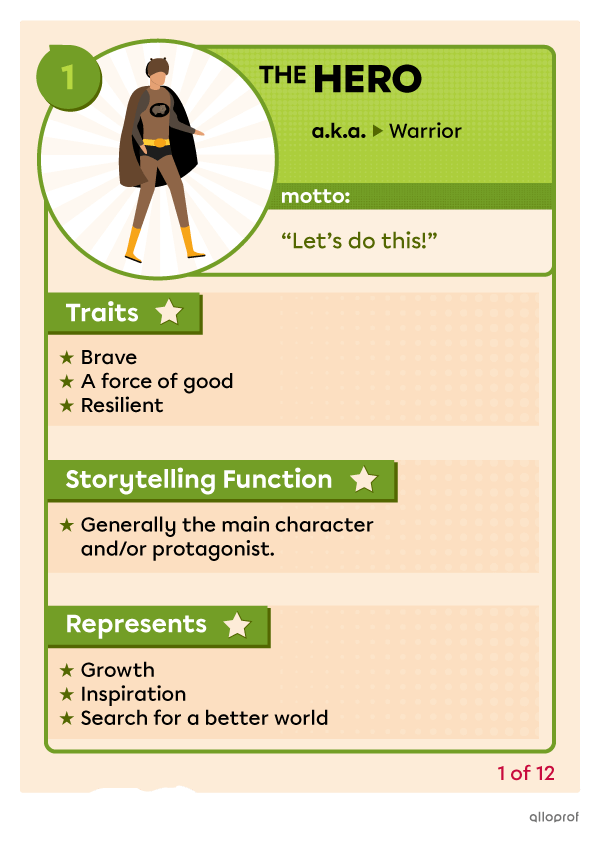
Hero archetype examples:
- Katniss Everdeen in The Hunger Games (Collins, 2008)
- Odysseus in The Odyssey (Homer, 8th century BC)
- Superman Action Comics #1 (Siegel & Shuster, 1938)
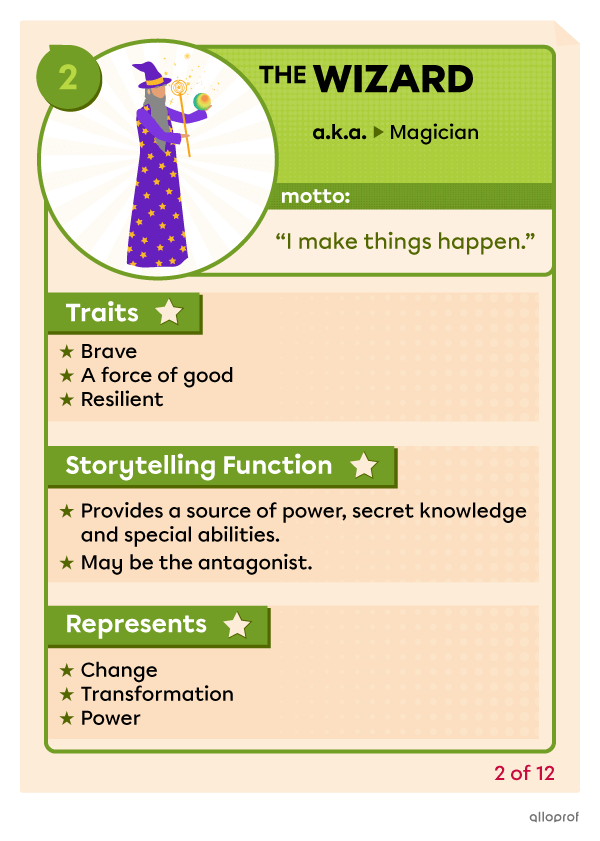
Wizard archetype examples:
- Gandalf in The Lord of the Rings series (Tolkien, 1954-1955)
- Prospero in The Tempest (Shakespeare, 1611)
- Getafix in Asterix the Gaul (Goscinny & Uderzo, 1961)
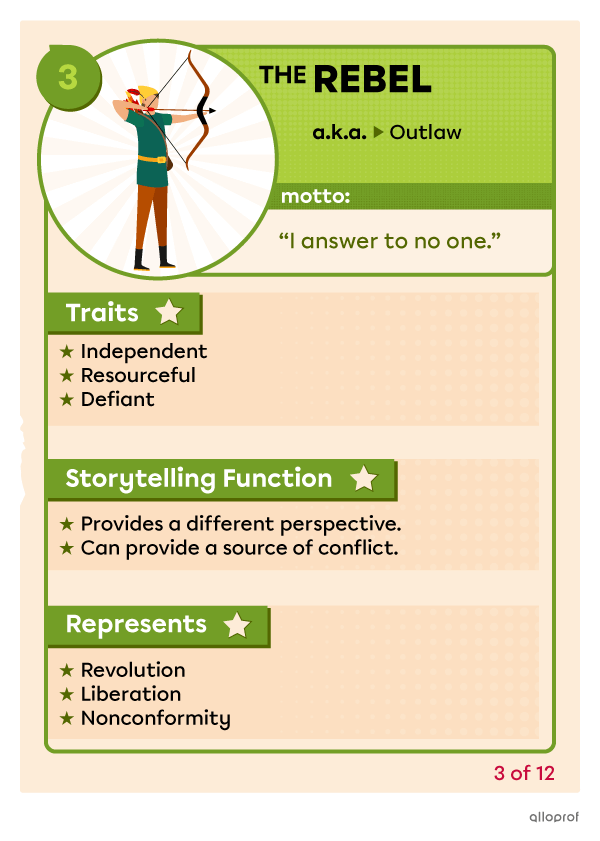
Rebel archetype examples
- Lyra Belacqua in Northern Lights (Pullman, 1995)
- Robin Hood from The English folk tales (13th-14th century)
- Wolverine from Giant-Size X-Men #1 (Wein & Cockrum, 1975)
Characters like the creator, the ruler and the caregiver want to provide structure in the world they live in.
They create order.
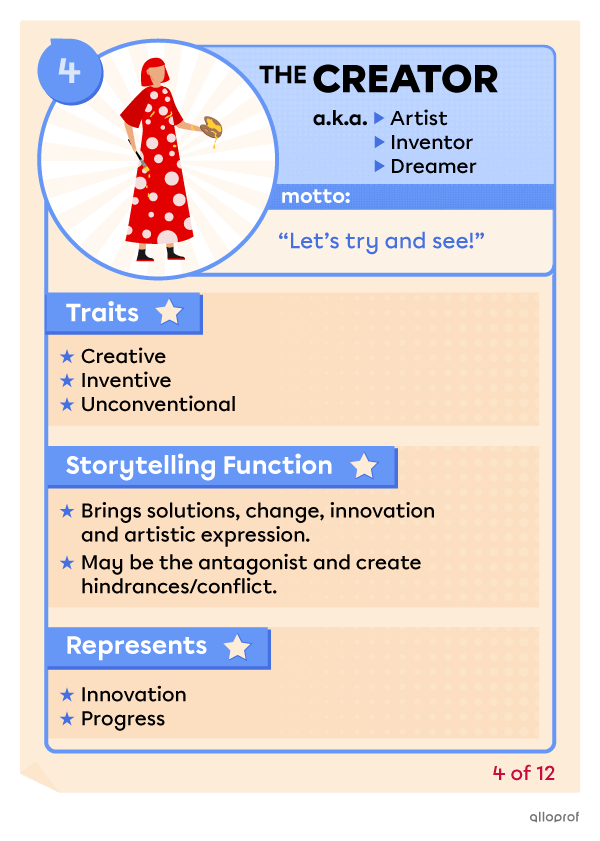
Creator archetype examples
- Henry Jekyll in The Strange Case of Dr. Jekyll and Mr. Hyde (Stevenson, 1886)
- Mark Watney in The Martian (Weir, 2011)
- Tony Stark in Tales of Suspense #39 (Lieber, Lee, Colan, Heck & Ditko, 1963)
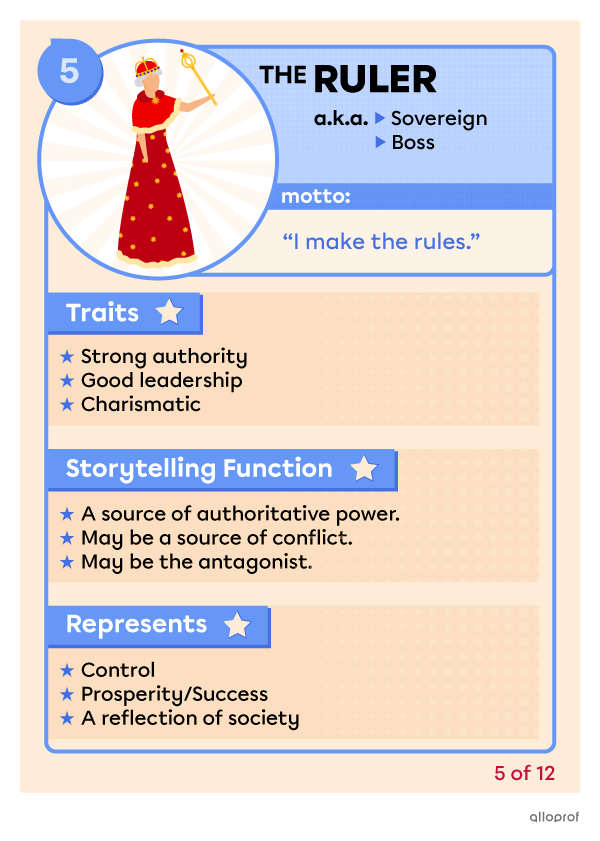
Ruler archetype examples
- Aslan in The Lion, the Witch and the Wardrobe (Lewis, 1950)
- Cersei Lannister in A Game of Thrones (Martin, 1996)
- Black panther (T’Challa) in Fantastic Four #52 (Lee & Kirby, 1966)
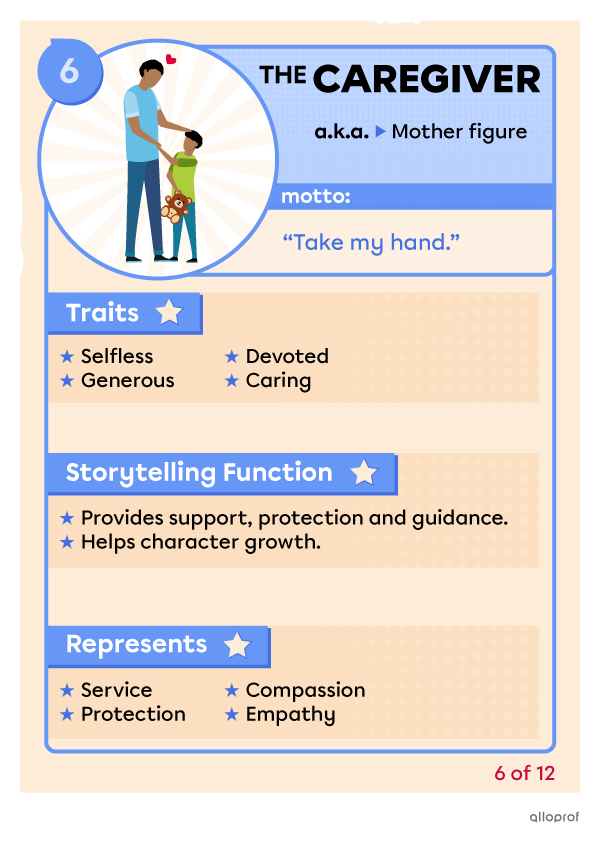
Caregiver archetype examples
- Mary Poppins in Mary Poppins (Travers, 1934)
- Charlotte A. Cavatica in Charlotte’s Web (E.B. White, 1952)
- Alfred Pennyworth in Batman #16 (Cameron & Kane, 1943)
Characters like the everyman, the lover and the trickster are social by nature.
They want to belong by making connections.
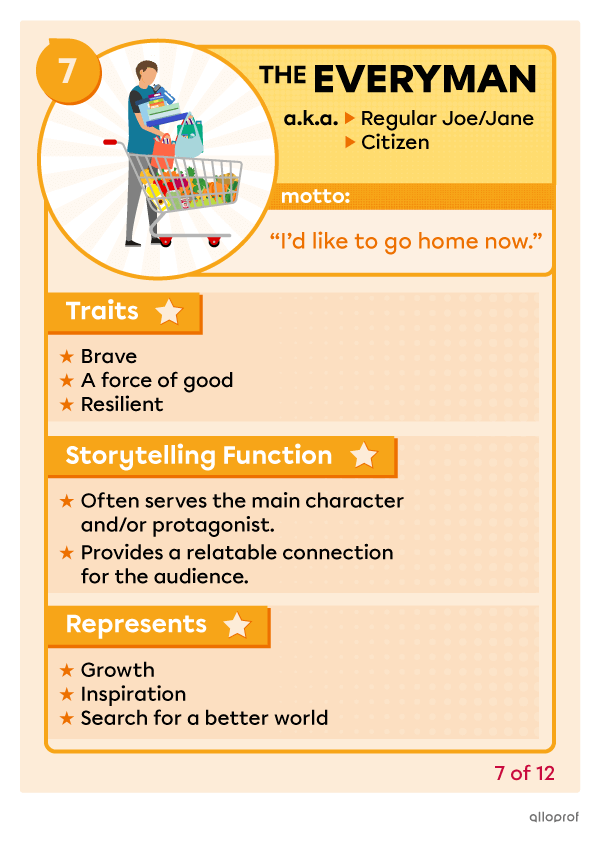
Everyman archetype examples
- Arthur Dent in The Hitchhiker’s Guide to the Galaxy (Adams, 1979)
- Bridget Jones in Bridget Jones’s Diary (Fielding, 1996)
- Kamala Khan (Ms. Marvel) in Captain Marvel #14 (DeConnick, Quinones & Hepburn, 2013)
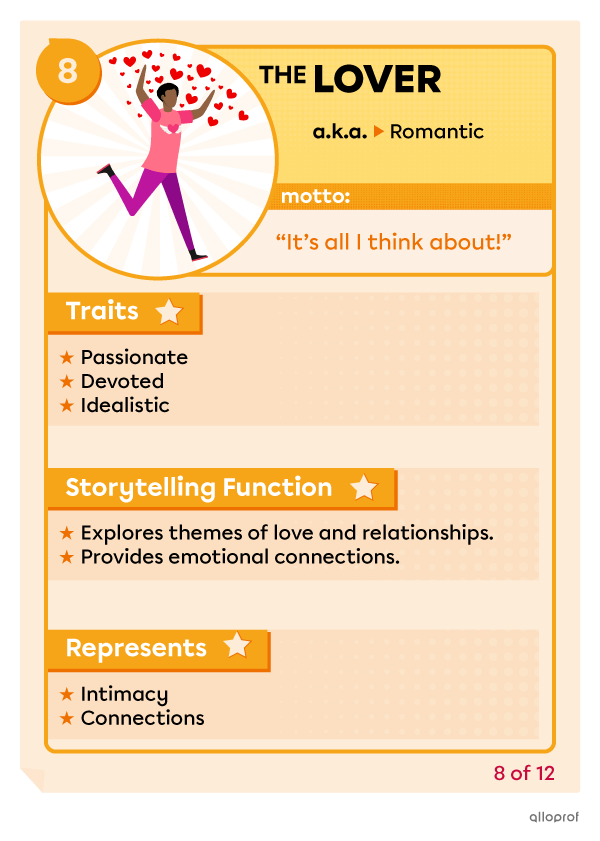
Lover archetype examples
- Romeo & Juliet in Romeo & Juliet (Shakespeare, 1597)
- Noah Calhoun & Allie Nelson in The Notebook (Sparks, 1996)
- Peter Parker & Mary Jane Watson in The Amazing Spider-Man #25 (Lee & Romita Sr, 1965)

Trickster archetype examples
- Tigger in Winnie-the-Pooh (Milne, 1926)
- Q in the James Bond novels (Fleming 1953-1966)
- The Cheshire Cat in Alice’s Adventure in Wonderland (Carroll, 1865)
- Tom Sawyer in The Adventures of Tom Sawyer (Twain, 1876)
Characters like the explorer, the innocent and the mentor are looking for freedom and fulfillment.
They want a better understanding of the world and live freely in it.
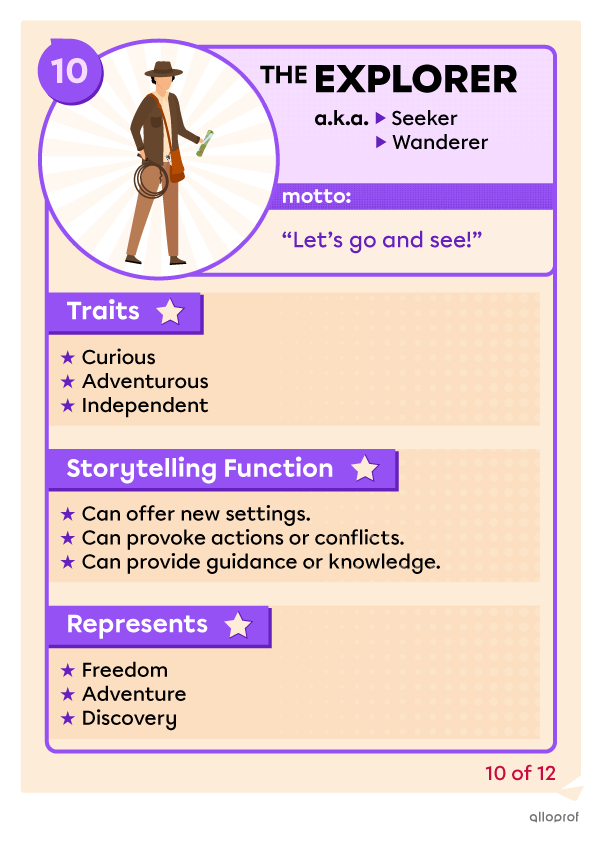
Explorer archetype examples
- Jim Hawkins in Treasure Island (Stevenson, 1883)
- Bilbo Baggins in The Hobbit (Tolkien, 1937)
- Robinsons Crusoe in Robinson Crusoe (Defoe, 1719)

Innocent archetype examples
- Scout Finch in To Kill a Mockingbird (Lee, 1960)
- Forrest Gump in Forrest Gump (Groom, 1986)
- Charlie Brown in Peanuts (Schultz, 1950-2000)
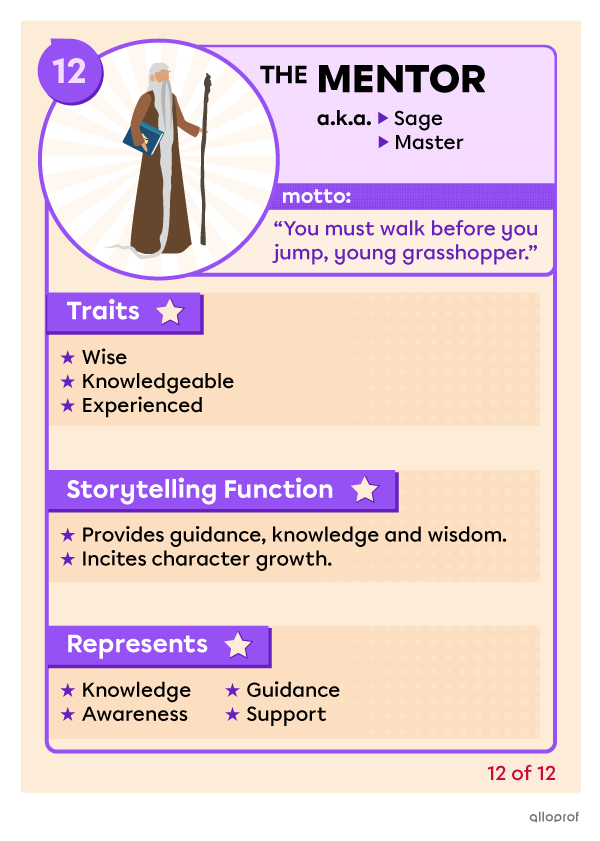
Mentor archetype examples
- Haymitch Abernathy in The Hunger Games (Collins, 2008)
- Baloo in The Jungle Book (Kipling, 1894)
- Professor X in the X-Men #1 (Lee & Kirby, 1963)